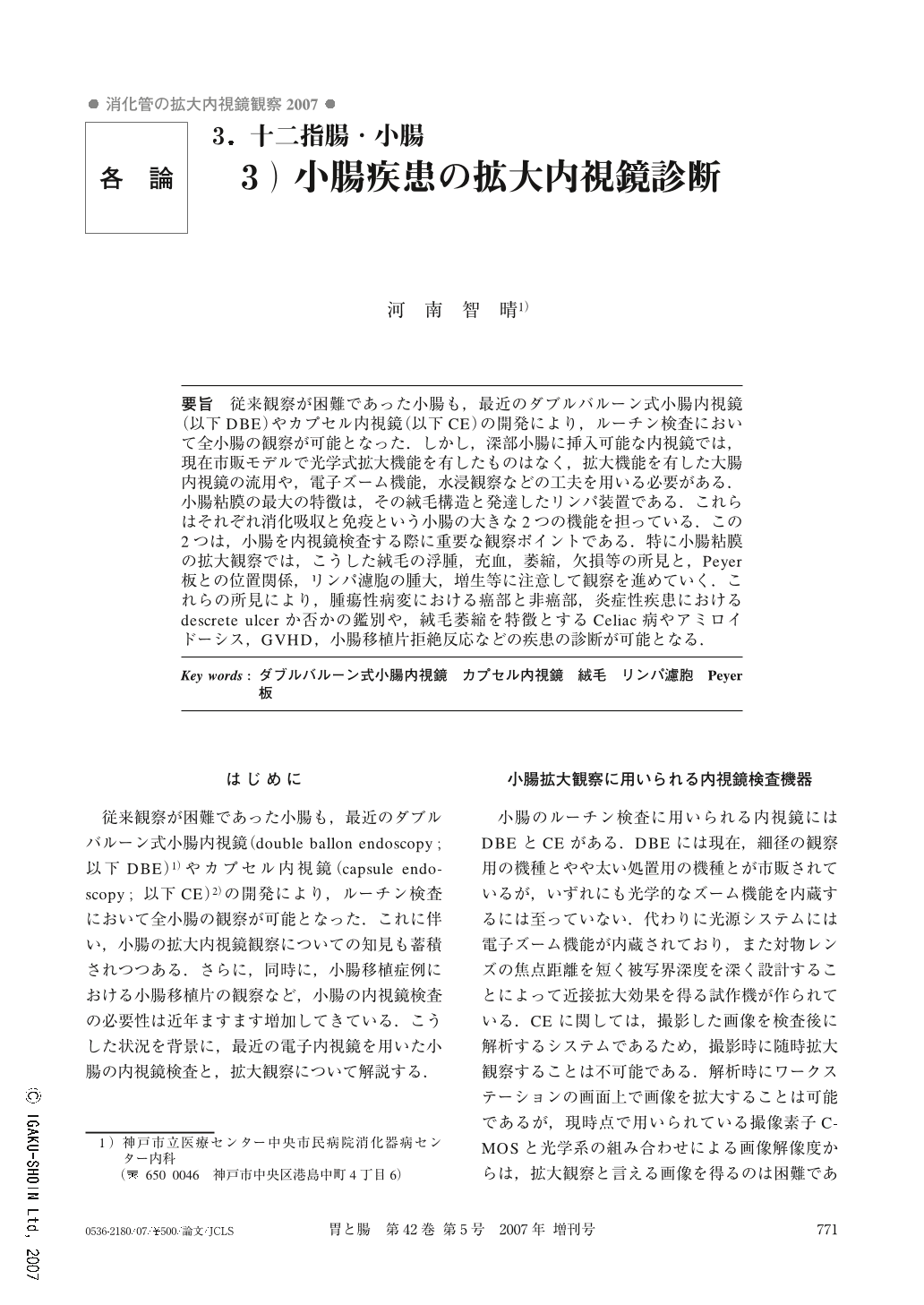Japanese
English
- 有料閲覧
- Abstract 文献概要
- 1ページ目 Look Inside
- 参考文献 Reference
要旨 従来観察が困難であった小腸も,最近のダブルバルーン式小腸内視鏡(以下 DBE)やカプセル内視鏡(以下 CE)の開発により,ルーチン検査において全小腸の観察が可能となった.しかし,深部小腸に挿入可能な内視鏡では,現在市販モデルで光学式拡大機能を有したものはなく,拡大機能を有した大腸内視鏡の流用や,電子ズーム機能,水浸観察などの工夫を用いる必要がある.小腸粘膜の最大の特徴は,その絨毛構造と発達したリンパ装置である.これらはそれぞれ消化吸収と免疫という小腸の大きな2つの機能を担っている.この2つは,小腸を内視鏡検査する際に重要な観察ポイントである.特に小腸粘膜の拡大観察では,こうした絨毛の浮腫,充血,萎縮,欠損等の所見と,Peyer板との位置関係,リンパ濾胞の腫大,増生等に注意して観察を進めていく.これらの所見により,腫瘍性病変における癌部と非癌部,炎症性疾患におけるdescrete ulcerか否かの鑑別や,絨毛萎縮を特徴とするCeliac病やアミロイドーシス,GVHD,小腸移植片拒絶反応などの疾患の診断が可能となる.
Endoscopic examination of the small intestine was very difficult, but we were enabled to easily examine the whole small intestine through the development of double balloon enteroscopy (DBE) and capsule endoscopy (CE). However, none of the enteroscopes for the examination of the small intestine have magnifying ability. The characteristic of the small intestine mucous membrane is the villus structure and the developed lymphatic equipment. These include the two big features of the small intestines which are called digestive absorption and immunity respectively. These two features are important observation points when examining the small intestine by endoscopy. Specifically, in magnifing observation of the small intestine mucous membrane, magnifing endoscopy pays attention to the physical relationship of the view and the lymphatic equipment of the edema, the congestion, the atrophy or the deficit of such a villus structure and so on, and it advances observation in various diseases, for examples, Celiac disease, amyloidosis, GVHD, or acute rejection after transplantation.

Copyright © 2007, Igaku-Shoin Ltd. All rights reserved.


